The Moon’s far side contains fascinating hidden features: the massive South Pole-Aitken basin, unexpected subsurface magmatic activity, an unusually thick crust, extreme terrain variations, a pristine radio quiet zone for astronomy, exceptionally high crater density telling an ancient geological story, and valuable water ice deposits in permanently shadowed regions. You’ll never see these features from Earth due to tidal locking, making them truly “hidden” from direct human observation. Discover what makes the lunar far side an entirely different world.
7 Hidden Features of the Moon’s Far Side
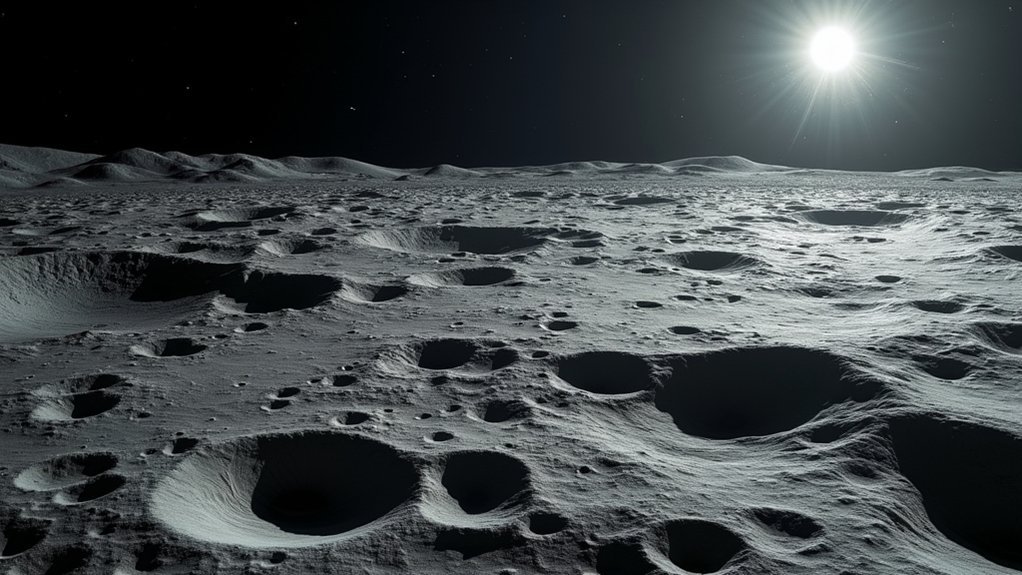
While Earth-based observers have gazed at the same lunar face for millennia, the Moon’s far side has remained an elusive mystery until the space age. This hidden hemisphere reveals a dramatically different lunar surface—one dominated by impact craters covering 99% of the terrain, compared to just 68.8% on the near side.
The far side’s thicker crust supports its rugged landscape, primarily the South Pole–Aitken basin—the largest and oldest lunar crater ever discovered.
Recent missions like Chang’e-6 have revealed previously unknown magmatic activity beneath the surface, challenging our understanding of lunar geological features.
Unlike Apollo-explored regions, the far side offers pristine conditions for studying the Moon’s evolution.
Scientists anticipate that lunar samples from upcoming missions will uncover more secrets, including potential water ice deposits in permanently shadowed craters.
The South Pole-Aitken Basin: Ancient Impact Mystery
You’ll find the South Pole-Aitken Basin‘s billion-year-old impact crater holds the Moon’s most ancient secrets, dating back to the early solar system formation.
The massive collision that created this 2,500-kilometer depression likely penetrated deep enough to expose mantle materials, offering rare evidence of the Moon’s internal composition.
Hidden beneath the basin’s surface lies magmatic evidence that could revolutionize our understanding of how the Moon evolved after its violent birth.
Billion-Year Crater Mystery
How often do we encounter a scar so colossal it’s visible from space yet hidden from Earth’s direct view? The South Pole-Aitken Basin represents one of our solar system’s most profound lunar mysteries.
You’re looking at a 4-billion-year-old impact crater spanning 2,500 kilometers and plunging 13 kilometers deep—dimensions that challenge our understanding of planetary bodies.
This ancient basin’s geological features differ markedly from the Moon’s near side, with a thicker crust that tells a unique story about lunar history.
Scientists believe this massive depression holds keys to the Moon’s thermal evolution and early formation.
Future exploration might reveal hidden resources within this cosmic time capsule, potentially uncovering how giant impacts shaped not just our Moon, but other worlds throughout our solar system.
Hidden Magmatic Evidence
Beneath the ancient lunar scar that forms the South Pole-Aitken Basin lies a geological surprise that’s rewriting lunar science.
University of Hong Kong researchers have discovered hidden magmatism near the Chang’e-6 landing site, challenging the long-held belief that the Moon is geologically dead.
You’ll find evidence of shallow crustal intrusions within this massive basin, revealing active geological processes continuing beneath the lunar surface.
These features, characterized by high magnesium content rocks (Mg-suite), offer important insights into the Moon’s thermal history and suggest volcanic activity occurred more recently than scientists previously thought.
This discovery doesn’t just reshape our understanding of lunar evolution—it’s crucial for future lunar exploration.
As we plan permanent lunar bases, identifying these hidden geological features could prove essential for resource utilization and safer settlement strategies.
Hidden Magmatism and Subsurface Volcanic Activity
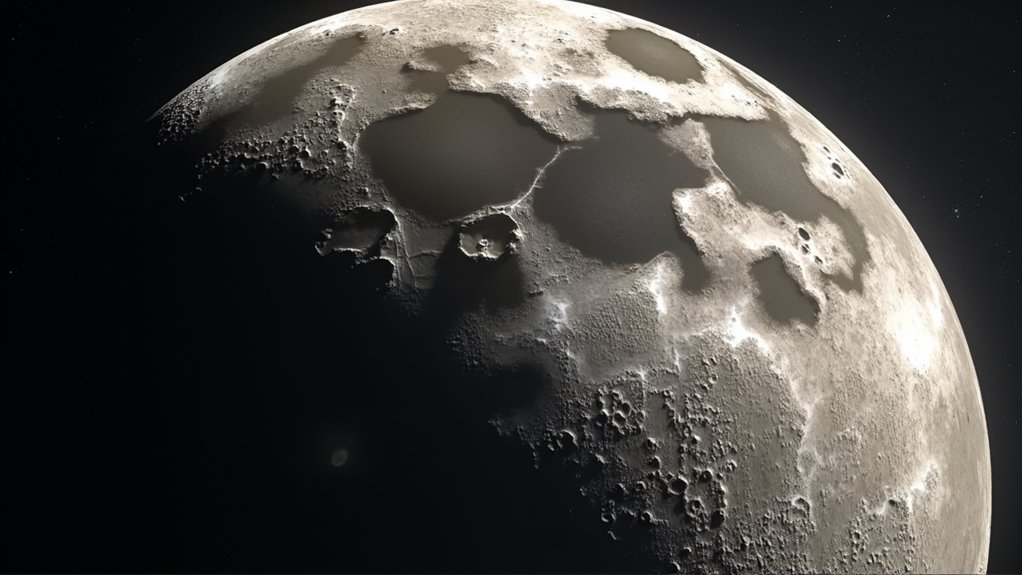
While most consider the Moon a geologically dead world, recent findings from University of Hong Kong researchers have revealed surprising evidence of hidden magmatism near the Chang’e-6 landing site.
This discovery challenges our understanding of the Moon’s surface and suggests ongoing geological processes beneath the lunar crust.
The findings in the South Pole–Aitken basin have significant implications:
- Shallow crustal intrusions indicate the Moon isn’t as dormant as previously thought, potentially rewriting our understanding of its thermal history
- High-magnesium Mg-suite rocks linked to these processes add complexity to previous lunar sample analyses
- The presence of hidden magmatism raises exciting possibilities for human habitation, with potential geothermal energy sources for future lunar bases
You’re witnessing a paradigm shift in lunar science that could transform future exploration strategies.
Thicker Crust and Extreme Terrain Variations
The Moon’s far side reveals a dramatically different world than what you’re accustomed to seeing from Earth, with a crust approximately 20 kilometers thicker than the familiar near side.
This thicker crust contributes to stunning terrain variations, including Mons Huygens, which soars 5,500 meters high, and the South Pole-Aitken basin, plunging 8,200 meters deep.
Unlike the near side’s expansive maria (covering 31.2% of its surface), the far side features just 1% maria.
Instead, you’ll find a landscape dominated by impact craters and rugged highlands.
These highland regions preserve the Moon’s ancient surface, displaying a greater density of craters due to minimal volcanic activity that would otherwise obscure them.
These geological differences offer valuable insights into lunar evolution and the processes that shaped our celestial neighbor.
The Radio Quiet Zone: Scientific Potential
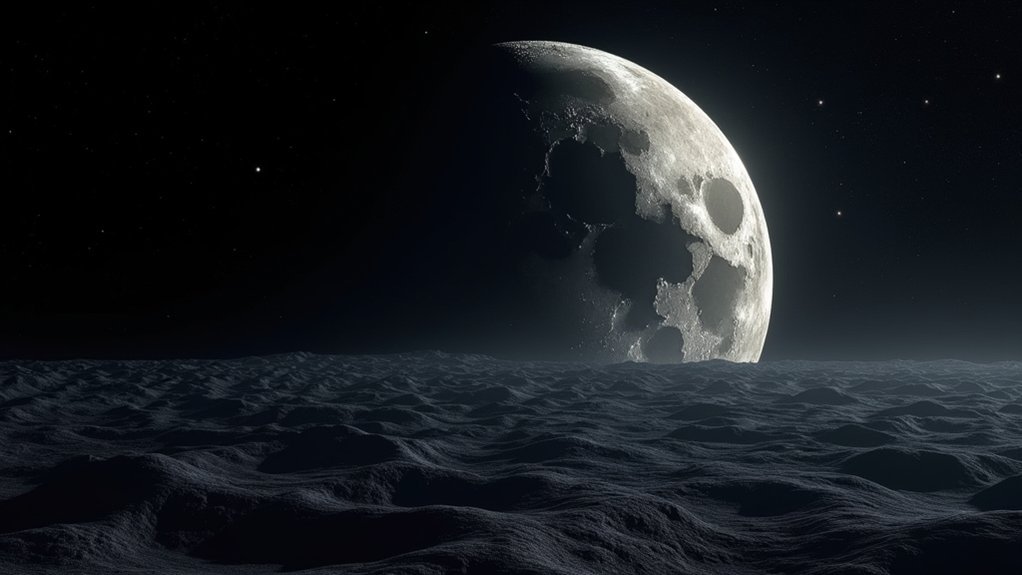
Beyond its unique geological features, the far side of the Moon offers something Earth-based astronomers can only dream of—pristine radio silence.
Shielded from Earth’s radio transmissions, this natural sanctuary enables revolutionary radio astronomy opportunities on the lunar surface.
Potential telescope sites like Daedalus and Saha craters would allow you to:
- Detect cosmic signals previously lost in Earth’s electromagnetic noise
- Study the early universe, dark matter, and cosmic microwave background with unprecedented clarity
- Combine scientific research on astrophysical processes with enhanced lunar geology investigations
The upcoming Lunar Surface Electromagnetics Experiment (LuSEE-Night) in 2026 will capitalize on this radio quietness.
Radio telescopes installed on the far side won’t just revolutionize our understanding of cosmic phenomena—they’ll reveal mysteries of the universe’s origins previously beyond our reach.
Crater Density and Geological Timeline
You’ll find the far side of the Moon preserves an ancient impact record, with over 300 craters larger than 20 kilometers in diameter telling a story of our solar system’s violent past.
This cratered landscape stands in stark contrast to the near side, offering scientists a pristine timeline that hasn’t been obscured by volcanic activity that covered 31.2% of the near side with maria.
The South Pole-Aitken basin serves as a cornerstone for understanding this timeline, allowing researchers to analyze both major impact events and the distribution patterns of smaller craters that followed.
Ancient Impact Records
While astronomers have long studied the Moon’s near side, its far side tells a dramatically different geological story through its impact scars. The Moon’s far side preserves a remarkably ancient impact record, with considerably higher crater density revealing billions of years of cosmic bombardment.
You’ll find that this remarkable difference stems from several key factors:
- The far side’s thicker lunar crust helped preserve impact craters that would have been erased by volcanic activity elsewhere.
- The South Pole–Aitken basin, the Moon’s largest and oldest known crater, offers a window into early solar system conditions.
- Due to lunar libration, you can occasionally glimpse about 18% of the far side, providing partial views of this ancient geological history.
These ancient impact records continue to reshape our understanding of the Moon’s geological processes and early formation history.
Major vs. Minor Distributions
Since the far side receives limited direct observation, its striking crater density tells a compelling geological story that differs dramatically from the near side’s narrative.
You’ll find over 30,000 impact craters larger than 1 km on the far side, compared to the near side where volcanic maria cover 31.2% of the surface, effectively hiding many ancient impacts.
The South Pole–Aitken basin stands as the Moon’s oldest and largest impact structure, anchoring the far side’s geological history.
While the near side experienced extensive lava flows that obscured many craters, the far side’s rugged terrain preserves evidence of early bombardment periods.
This distribution disparity suggests fundamental differences in lunar crust composition, possibly resulting from a collision with other celestial bodies that altered the Moon’s geological development permanently.
Water Ice Deposits in Permanently Shadowed Regions
Three critical features make the Moon’s far side a treasure trove of water ice resources. You’ll find these precious deposits primarily in permanently shadowed regions where sunlight never reaches the bottoms of craters.
The South Pole–Aitken basin, one of the Moon’s oldest and largest impact sites, contains significant ice quantities that could revolutionize lunar exploration.
Ancient lunar basin holds ice treasures that may transform how we explore the Moon
- NASA’s Lunar Reconnaissance Orbiter has detected hundreds of millions of metric tons of accessible water ice using specialized radar technology.
- These deposits will provide essential resources for future astronauts, including drinking water, breathable oxygen, and rocket fuel.
- Missions like Chang’e-6 are specifically targeting these regions to study samples collected from these shadowed areas.
This discovery transforms our approach to establishing sustainable human presence beyond Earth.
Frequently Asked Questions
What Is Special About the Far Side of the Moon?
You’ll notice the Moon’s far side has more craters, thicker crust, and extreme elevations. It’s shielded from Earth’s radio signals, making it perfect for astronomy. It’s also where Chang’e-4 made a historic landing.
What Was Found on the Dark Side of the Moon?
You’ll find the Chang’e 4 mission discovered evidence of hidden magmatism near the South Pole-Aitken basin. It’s not actually dark, just unseen from Earth, with more craters and less maria than the near side.
What Did the Astronauts See on the Far Side of the Moon?
Astronauts saw a rugged terrain with numerous impact craters and very few maria (dark plains). You’ll notice the far side’s dramatic elevation variations, including the Himalaya Mountains and the South Pole-Aitken basin when viewing Apollo photographs.
What Features Are on the Near Side Moon?
You’ll see vast dark plains called maria on the near side, covering about 31% of the surface. There’s the Sea of Tranquility where Apollo 11 landed, fewer craters, and mountain ranges like the Apennines.
In Summary
You’ve now explored seven fascinating features hidden on the lunar far side, from ancient impact basins to potential water ice deposits. Next time you look at the Moon, remember there’s a whole hidden world you can’t see from Earth. These mysterious features aren’t just scientific curiosities—they’re potential resources and research opportunities that’ll shape our future lunar exploration and understanding of the Solar System.



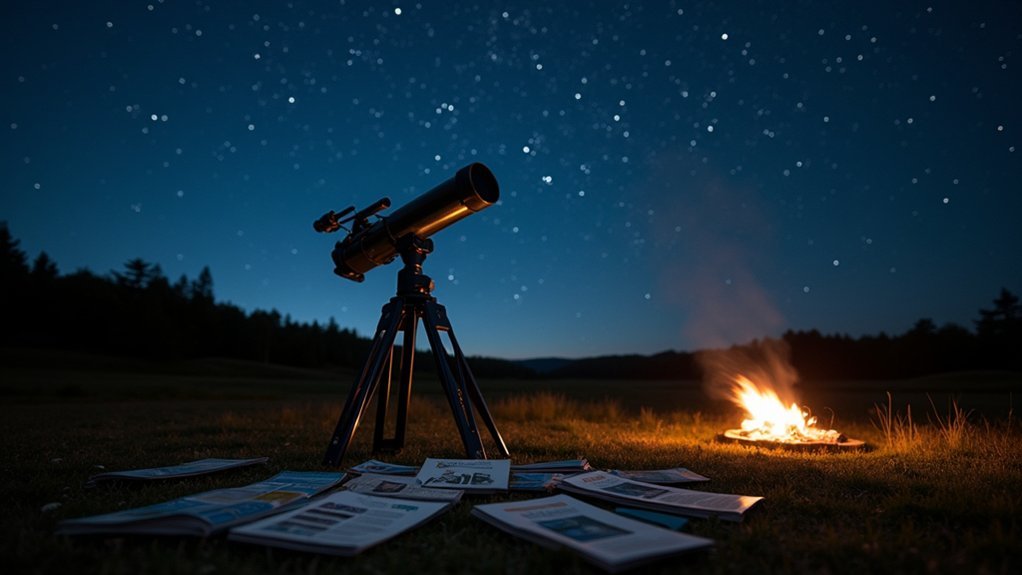
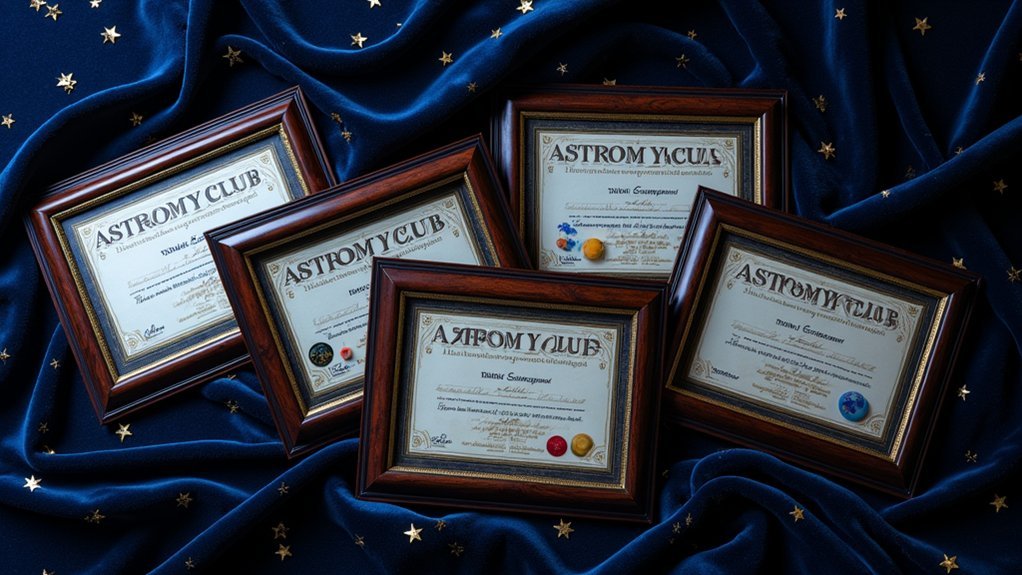
Leave a Reply